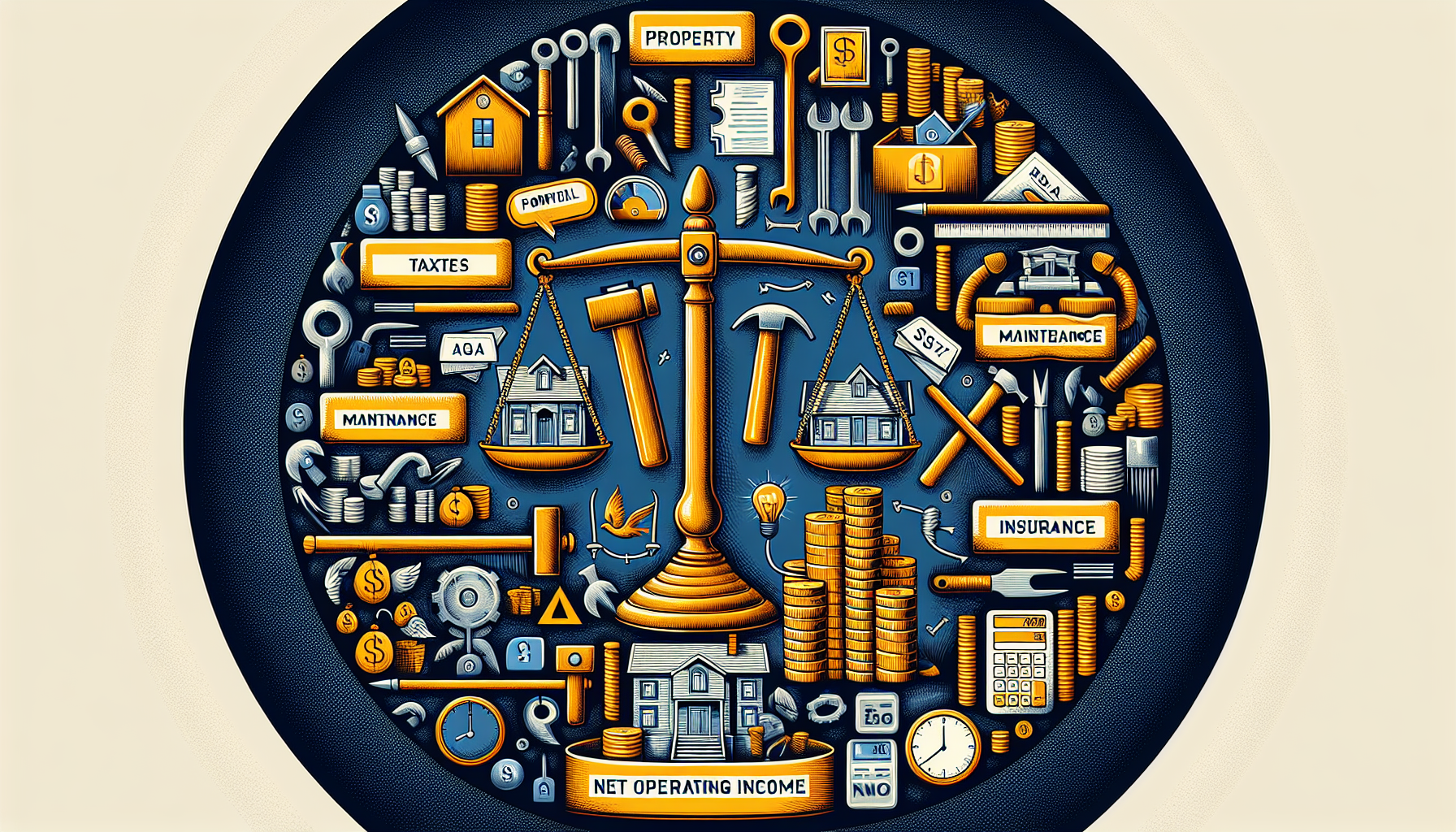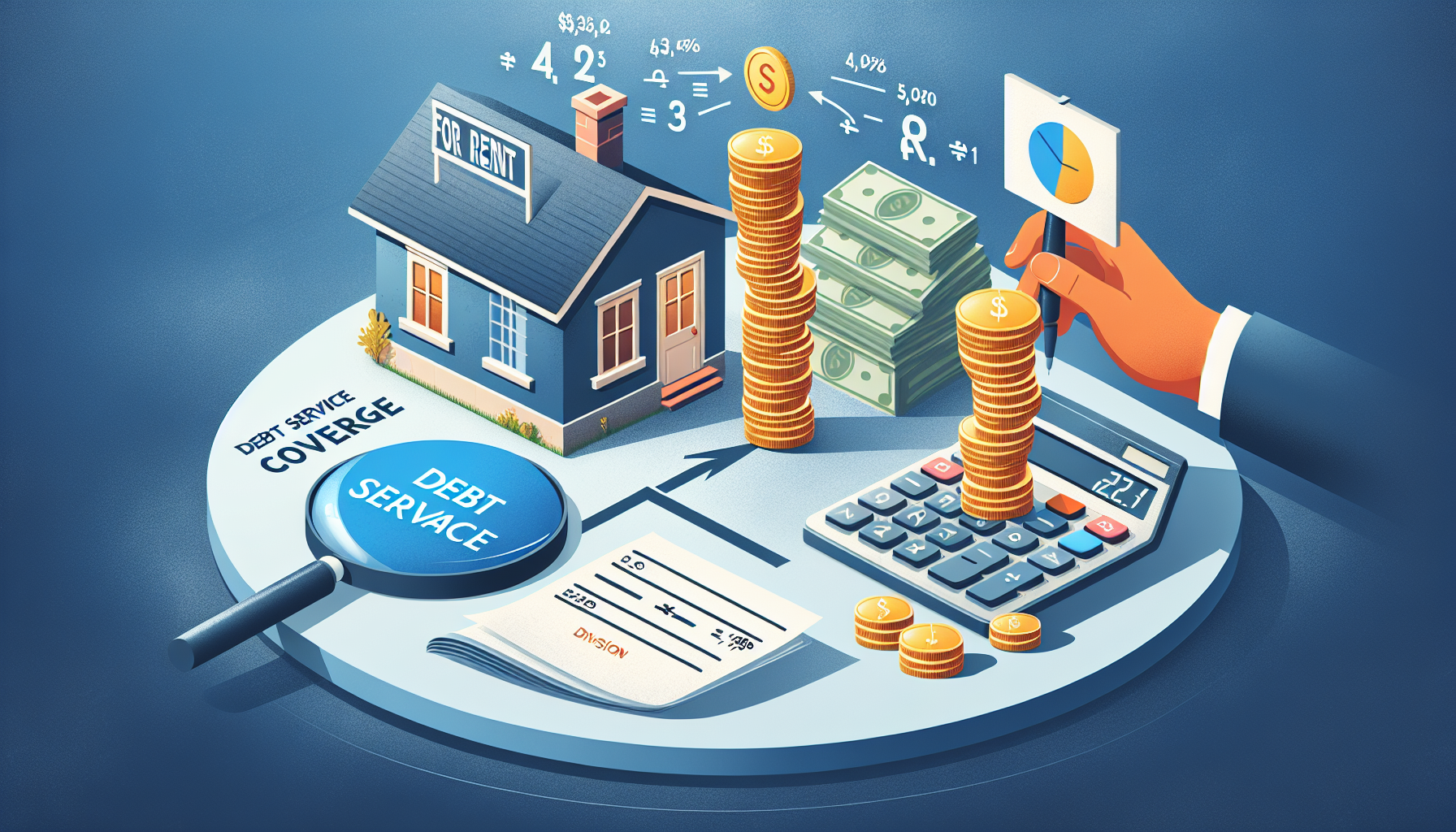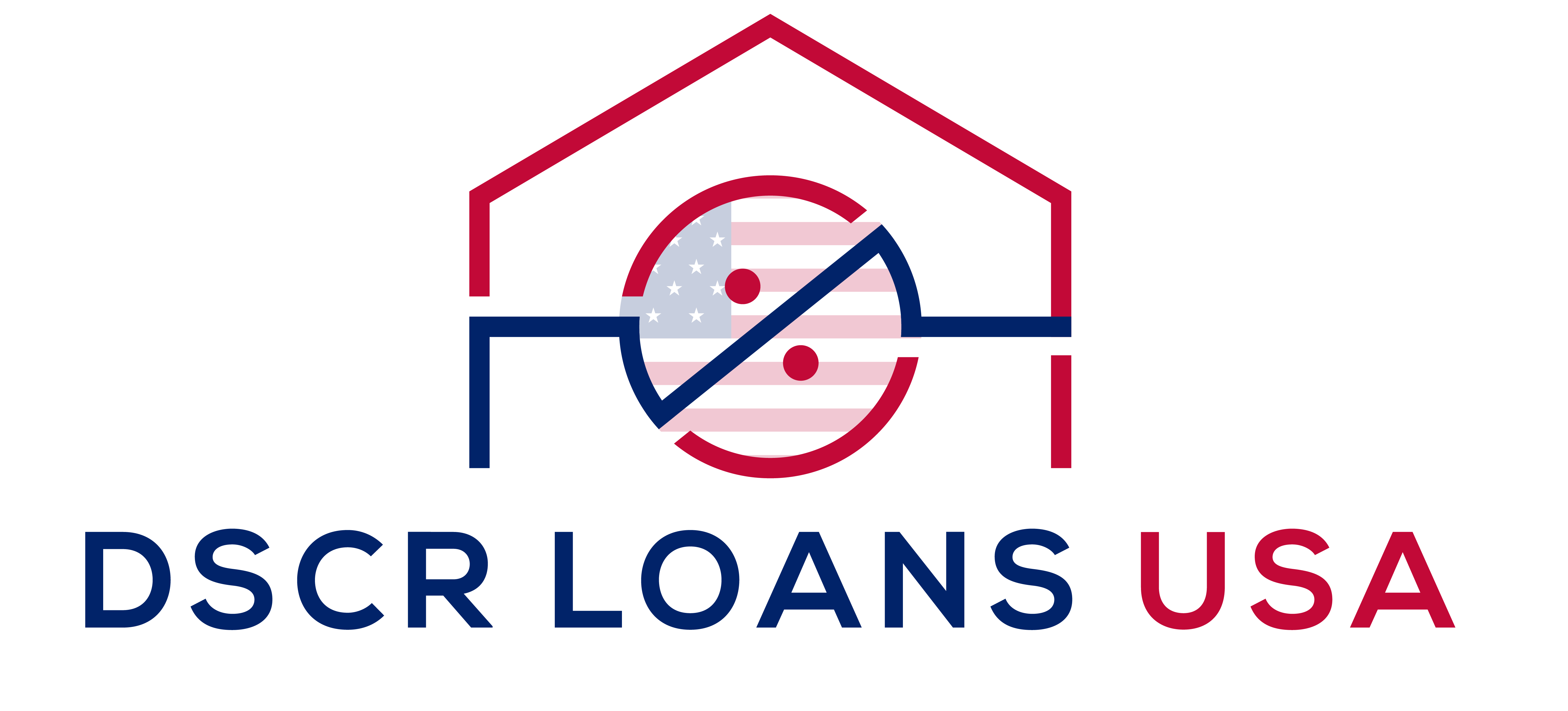How To Get A DSCR Loan in 2024
Knowing how to get a DSCR loan can make all the difference if you’re an investor aiming to finance a rental property.
This guide cuts through the jargon to provide you with straightforward steps to determine your eligibility, prepare your documentation, and submit a successful application. Learn how to leverage the investment’s cash flow to your advantage and what lenders look for in a DSCR loan candidate—all without overwhelming you with unnecessary details.
Key Takeaways
- A DSCR loan evaluates a property’s cash flow rather than the borrower’s personal income, which makes real estate investments more accessible for various investors including the self-employed and those involved in niche investment strategies.
- Before applying for a DSCR loan, it’s crucial to assess the investment property’s financials, including rental income, operating expenses, and calculating the Debt Service Coverage Ratio (DSCR) which ideally should be at least 1.25.
- Successful DSCR loan applications require thorough preparation, including a detailed financial documentary proof, understanding loan terms, and considering the impact of the borrower’s credit score which should ideally be 620 or higher.
Decoding the DSCR Loan: Understanding the Basics

A DSCR loan, short for Debt Service Coverage Ratio Loan, is a type of mortgage loan. It’s unique in that, rather than focusing on your personal income, it assesses the cash flow of the property you’re investing in. This approach offers flexibility compared to conventional financing, making it an advantageous option for a range of real estate investors. Whether you’re self-employed, part of an investment partnership, or engaged in niche strategies like short-term rentals or the BRRRR Method, DSCR loans could be an ideal financing solution.
It’s also a fantastic way to access capital to expand your portfolio, especially when traditional financing options may not be feasible. By focusing on the property’s cash flow, DSCR loans offer a more accessible route to financing for those looking to make big moves in the real estate market.
Evaluating Your Investment Property’s Financial Health

Before rushing into a DSCR loan application, it’s crucial to evaluate your investment property’s financial health. This involves a thorough examination of the property’s rental income, operating expenses, and Debt Service Coverage Ratio (DSCR).
By understanding these elements, you’re able to make informed decisions about your property’s financial potential and viability for a DSCR loan.
Rental Income Analysis

Rental income is a crucial part of assessing the financial health of an investment property. Various factors can influence rental income, including:
- The property’s location
- Rental income potential
- Property type
- Vacancy rate
- Costs associated with ownership and maintenance
For instance, a property located in a busy city center may have a higher property’s income potential, such as rental income, than one located in a rural area with less demand.
Also, consider the rent price, consistent tenant availability, and the occupancy rate to ensure the property can consistently generate rental income enough to cover mortgage and other financial obligations. Don’t overlook potential additional revenue streams such as parking fees, laundry services, and vending machines. These can help maximize income and ensure that the analyzed rental income exceeds mortgage payments and other financial obligations for the property to maintain a positive cash flow.
Operating Expenses Breakdown

Just as important as rental income is your understanding of operating expenses. These are the costs incurred in maintaining a rental property in good condition. They include expenses like:
- insurance
- utility bills
- property taxes
- maintenance
- property management fees
- regular expenses such as repairs and marketing
All of these are categorized as operating expenses.
When determining your property’s net operating income (NOI), it’s important to distinguish between operating expenses and capital expenses. The latter includes significant upgrades to the property, which are not considered in NOI calculations. By having a clear overview of your operating expenses, you can better manage your investment property’s financial health and calculate a more accurate DSCR, as the property’s net operating income plays a crucial role in this process.
Calculating Your Property’s DSCR

The Debt Service Coverage Ratio (DSCR) is a crucial metric in DSCR loan applications. It represents the ratio of the property’s monthly rental income to its monthly debt service. The debt service includes:
- principal
- interest
- taxes
- insurance
- homeowner’s association fees
However, monthly expenses for the purpose of DSCR only include costs directly related to the debt service, excluding general operating expenses.
A strong DSCR is usually considered to be at least 1.25, indicating that the rental income exceeds the debt service costs by 125%. This demonstrates the property’s strong ability to cover its debt obligations. On the other hand, a DSCR close to 1 can be a red flag for lenders, as it suggests only just sufficient income to cover debt service payments, indicating potential vulnerability.
Preparing for the DSCR Loan Application
Once you’ve evaluated your property’s financial health, it’s time to prepare for the DSCR loan application. This process involves gathering necessary documents, understanding loan terms, and considering the impact of your credit score.
Let’s delve into the specifics.
Document Checklist
When applying for a DSCR loan, you’re required to provide detailed financial documents. These include proof of property income and information about your personal financial situation. Documents that verify a property’s income, such as a property appraisal and information on lease income for both long and short-term rentals, form a critical component of the DSCR loan application.
Also, you must provide the following documents for a DSCR loan application:
- Personal financial information through bank statements
- Evidence of liquid asset reserves that cover several months of PITIA payments
- Insurance documents proving sufficient coverage of the property
- Legal paperwork, in cases of ownership through an entity like an LLC
These documents are obligatory for a DSCR loan application.
By preparing all these necessary documents, you’re one step closer to securing your DSCR loan.
Understanding Loan Terms
Understanding the terms and conditions of DSCR loans is crucial in the application process. While these loans offer competitive interest rates, they may also come with prepayment penalties. Prepayment penalties indicate a fee that you’ll be required to pay if you settle the loan before the predetermined term.
Some entities, like Bennett Capital Partners, offer competitive interest rates and flexible terms for DSCR loans, catering to the unique needs of real estate investors. By understanding the loan terms, you can make informed decisions and ensure you’re getting the best possible deal for your investment.
The Impact of Credit Score
While DSCR loans predominantly focus on the income generated from the property, your personal credit score remains a crucial element in the qualification process. A borrower’s credit score directly impacts the terms of a DSCR loan, where lower scores might lead to higher interest rates and larger down payments required by lenders.
To qualify for a DSCR loan, lenders typically look for a minimum credit score of 620. However, maintaining a strong credit score is critical not just for securing favorable DSCR loan terms initially, but also for sustained success in real estate investment.
Navigating the DSCR Loan Process
Now that you’ve prepared for the DSCR loan application, it’s time to navigate the process of obtaining a DSCR loan. This involves pre-qualification, understanding loan approval criteria, and closing the deal.
Let’s unpack these steps.
Pre-Qualification and Property Appraisal
The initial phase of obtaining a DSCR loan includes a property appraisal, a cornerstone in the pre-qualification stage. During this appraisal, a thorough assessment is made of the property’s market value alongside its potential to bring in rental income.
The appraised value and rental income projections have a significant influence on the lender’s decision on the DSCR loan application. Therefore, it’s crucial to get an accurate property appraisal and ensure your property has a high potential for generating significant rental income.
Loan Approval Criteria
Understanding the criteria lenders use to approve DSCR loans can greatly enhance your chances of securing a loan. Lenders typically look for a DSCR of 1.25 or higher to qualify borrowers for a DSCR mortgage loan. However, loans with a DSCR below 1.0 might be granted for properties with expected rental income increases, or those with high equity and potential for rental income growth.
It’s also important to note that DSCR loans are exclusively for non-owner-occupied investment properties. By meeting these criteria, you’re more likely to secure a DSCR loan for your real estate investment.
Closing the Deal
Once your loan is approved, it’s time to close the deal. Before signing on the dotted line, review cash flow statements and projections to ensure the rental income is sufficient to cover the DSCR loan payments. Understand the continuing requirement of monitoring property performance to maintain a positive cash flow capable of servicing the DSCR loan after closing.
Lastly, conduct a final review of the DSCR loan agreement, clarifying any terms or conditions, to maintain open communication with the lender up to the closing date. By diligently following these steps, you can successfully close the deal and secure your DSCR loan.
Maximizing Your Chances for DSCR Loan Approval
Even after successfully navigating the DSCR loan process, there are strategies you can employ to maximize your chances of securing a DSCR loan. From enhancing property value to managing debt obligations and considering alternative financing options, let’s explore these strategies.
Enhancing Property Value
One way to boost your chances of securing a DSCR loan is by enhancing the value of your property. Investing in renovations and property upgrades can significantly raise the market value of a property, allowing for increased rental rates, which in turn enhances your DSCR.
Another strategy is optimizing property occupancy rates and appropriately increasing rent according to market trends. This can contribute to higher rental income, which positively affects the DSCR.
By implementing these strategies, you can raise income and enhance your DSCR, thereby increasing your chances of securing a DSCR loan.
Managing Debt Obligations
Another crucial aspect of enhancing your chances of securing a DSCR loan is managing debt obligations. Refinancing existing debts can help secure lower interest rates or longer repayment terms, which lowers monthly payments and improves cash flow.
Improved cash flow, in turn, positively impacts your DSCR, making you a more appealing candidate for a DSCR loan.
Alternative Financing Options
Even with all the right strategies in place, there’s still a chance a DSCR loan might not be approved. It’s important for real estate investors to have backup financing plans. Alternative financing options for investment property include:
- Conventional bank loans
- Hard money loans
- Private money loans
- Utilizing home equity through loans or lines of credit.
Having these alternatives at hand ensures that you can secure funding for your investment property even if you’re unsuccessful in obtaining a DSCR loan. This flexibility can be crucial in the dynamic world of real estate investment.
Summary
Securing a DSCR loan can be a game-changer for real estate investors, providing flexibility and financial freedom to grow your portfolio. From understanding the basics of DSCR loans, evaluating your property’s financial health, preparing for the loan application, navigating the loan process, and maximizing your chances of approval, we’ve covered the essential aspects of securing a DSCR loan. Remember, a strong DSCR, sound management of debt obligations, and a proactive approach to enhancing property value can significantly increase your chances of securing a DSCR loan. Now, it’s your turn to take the next step in your real estate investment journey.
Frequently Asked Questions
What is a DSCR loan?
A DSCR (Debt Service Coverage Ratio) loan assesses the cash flow of the property instead of the borrower’s personal income, providing flexibility for real estate investors.
How is the DSCR calculated?
The DSCR is calculated by dividing the property’s monthly rental income by its monthly debt service, including principal, interest, taxes, insurance, and homeowner’s association fees.
What documents are required for a DSCR loan application?
To apply for a DSCR loan, you will need to provide proof of property income, personal financial information, insurance documents, and legal paperwork if ownership is through an entity like an LLC.
How does a credit score affect a DSCR loan application?
A credit score can impact a DSCR loan application by influencing the interest rates and down payment requirements, despite the emphasis on property income for these loans.
What are the alternatives if a DSCR loan is not approved?
If a DSCR loan is not approved, consider alternative financing options such as conventional bank loans, hard money loans, private money loans, or utilizing home equity through loans or lines of credit. These options can provide the necessary funds for investment property.
Ready for More Great Tips and Information? Join Our Email List Today!

